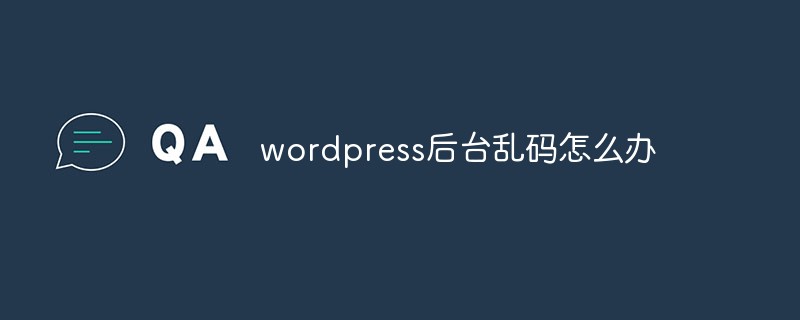WordPress Complete Guide to Building a Personal Blog
Overview
I have built my own blog in the past few days, using WordPress
Because I want to get https, but the online tutorials are not that comprehensive. At the same time, after finishing it, I also found that most of the online methods for enabling https in WordPress are too complicated and unnecessary, so I will share the process of building it here
Preparation work
Needless to mention a server
Domain name, I pointed a second-level domain name to the directory where the blog is located, which is the ssl after blog.xujifa.cn The certificates are directly given to this second-level domain name
Installation process
1. Database
Install mariadb, of course the same is true for mysql
You can use this Commandsudo yum install mariadb mariadb-server
After setting the password and so on, log in to the database
CREATE DATABASE wordpress;CREATE USER wordpressuser@localhost IDENTIFIED BY 'password';GRANT ALL PRIVILEGES ON wordpress.* TO wordpressuser@localhost IDENTIFIED BY 'password';FLUSH PRIVILEGES; EXIT;
and set the name and so on as you like.
2. Apache and PHP
Install apache: sudo yum install httpd mod_ssl mod_rewrite
Install php: sudo yum install php php- mysql
Start apache: sudo apachectl start, when you need to restart in the future, sudo apachectl restart
3. Download WordPress
The latest version is 4.7.1. It is strongly recommended to use the English version. There was a problem with the interface after I first started using the Chinese version. I am not sure if it is the fault of the Chinese version, but there is one thing. The English version will be faster than the Chinese version. There are a lot of them, I don’t know why, it’s just metaphysical.
wget https://wordpress.org/latest.tar.gz
Then move this to the /var/www/html/ directory
Unzip
tar -xzvf lastest.tar.gz
and then change the user of the folder to apache
sudo chown -R apache /var/www/html/
Problem:
If you encounter themes and plug-ins that cannot be downloaded while using WordPress and are prompted to require an ftp username and password, try re-running the above authorization Command
Then stop for a while and let https be done before moving on to wordpress. This may be better
4. Https
is issued by Let's Encrypt Free certificate, it provides a tool called certbot to help issue certificates. After the following operation
sudo yum install python-certbot-apachesudo certbot --apche
, you will be asked to fill in the URL, which is
but it should be noted that there are 90 seconds after the certificate. With a validity period of days, certbot also supports automatic renewal. Execute the following command
sudo certbot renew --dry-run
At this time, when you access your own website through https, you will find that there is a green lock.
If your blog is not placed in the root directory, for example, I hope
https://blog.xujifa.cn
points to /var/www/html/blog, then you need a little bit Additional operations.
certbot will generate the ssl.conf file under /etc/httpd/conf.d/, find This tag will have the DocumentRoot attribute underneath it. Uncomment it and change its value to the path you need, restart httpd, and that's it.
Now our website should be accessible through http and https, which is a bit overwhelming. We hope that http can be directed to https. We installed at the same time when installing httpd. mod_rewrite module, now is the time to use it.
Open the /etc/httpd/conf/httpd.conf file, find the <document></document> tag, and download it AllowOverride None was changed to AllowOverride All.
Then create a file named .htaccess in your blog directory (the path we decompressed in the third step) and add the following content.
RewriteEngine on RewriteBase /
RewriteCond %{SERVER_PORT} !^443$
RewriteRule ^.*$ https://%{SERVER_NAME}%{REQUEST_URI} [L,R=301]5. Continue to install WordPress
In the third step, we unzipped WordPress in the /var/www/html/ directory, enter the directory, and find wp-config-example.php file, rename it to wp-config.php and modify the information about the database (or you can also set it through the web page in the following steps) , and add these two sentences to set https
define('FORCE_SSL_ADMIN', true); define('FORCE_SSL_LOGIN', true);
Since WordPress uses Google to provide some resources such as fonts, which are blocked, it also needs to be changed to domestic sources. Here we use 360 to provide resources, open wp-includes/script-loader.php, and replace all googleapis inside with useso.
6. Start using
Access our blog through a browser, set the database information on the first page (you will skip it if you have already completed it in the previous step), and then Set your own username and password) and you can start using it.
That’s the main content of this blog. If I didn’t miss anything, the above steps should be enough.
If there are any questions in the article or something is unclear, please leave a message and I will reply as soon as possible.
The above is the detailed content of Steps to build a personal blog using WordPress using HTTPS. For more information, please follow other related articles on the PHP Chinese website!
 wordpress后台乱码怎么办Feb 03, 2023 pm 01:48 PM
wordpress后台乱码怎么办Feb 03, 2023 pm 01:48 PMwordpress后台乱码的解决办法:1、在wordpress的“wp-admin”文件夹下找到“admin.header.php”文件;2、将“charset”属性值设置为“UTF-8”格式即可恢复正常。
 如何解决wordpress标签错误问题Feb 03, 2023 pm 02:03 PM
如何解决wordpress标签错误问题Feb 03, 2023 pm 02:03 PMwordpress标签错误的解决办法:1、找到并打开wordpress的“wp-includes”目录下的“class-wp.php”文件;2、修改内容为“$pathinfo = isset( $_SERVER['PATH_INFO'] )?mb_convert_encoding($_SERVER['PATH_INFO'],'utf-8','GBK') : '';”即可。
 WordPress设置独立的Description和KeywordsFeb 21, 2023 am 11:14 AM
WordPress设置独立的Description和KeywordsFeb 21, 2023 am 11:14 AM你下载的WordPress主题提供的keywords和description这两个meta标签一般都做得很差,或者根本就不提供,这样不利于SEO。本文将指导你如何给主页、分类、页面以及文章页添加单独的Description 和 Keywords。
 wordpress乱码怎么办Mar 09, 2023 am 09:13 AM
wordpress乱码怎么办Mar 09, 2023 am 09:13 AMwordpress乱码的解决办法:1、修改“wp-config.php”文件里的“define(’DB_CHARSET’, ‘utf8′);”为“define(’DB_CHARSET’, ”);”;2、把新数据库的编码设置成“latin1_swedish_ci”;3、以uft8的格式导入备份的数据库文件即可。
 wordpress进不去怎么办Feb 23, 2023 am 09:41 AM
wordpress进不去怎么办Feb 23, 2023 am 09:41 AMwordpress进不去的解决办法:1、把地址栏“wp-login.php”后面的参数删掉,然后重新输入密码登录;2、登录FTP,下载“pluggable.php”文件,然后找到“ADMIN_COOKIE_PATH”并将它替换为“SITECOOKIEPATH”即可。
 wordpress是saas吗Feb 21, 2023 am 10:40 AM
wordpress是saas吗Feb 21, 2023 am 10:40 AMwordpress不是saas。SaaS是一种软件销售模式,它主要针对云端应用软件,而WordPress是一款CMS系统,它主要针对网站构建和管理。虽然WordPress可以作为SaaS提供服务,但它本质上不是一种SaaS应用。
 2023年最新WordPress视频教程推荐Oct 25, 2019 pm 01:12 PM
2023年最新WordPress视频教程推荐Oct 25, 2019 pm 01:12 PM本次PHP中文网整合了相关的视频教程,中文手册,以及相关的精选文章安利给大家,统统免费!!!通过我们分享的视频,可随时随地免费观看教程视频,也不需要迅雷或者百度网盘下载了。
 wordpress是哪一年的Feb 01, 2023 am 10:26 AM
wordpress是哪一年的Feb 01, 2023 am 10:26 AMwordpress是2003年发布的;Matt于2003年5月27日宣布推出第一版WordPress,受到了社区的欢迎,它基于b2 Cafelog并有显著改进;WordPress的第一个版本包括全新的管理界面、模板、XHTML 1.1兼容模板、内容编辑器。


Hot AI Tools

Undresser.AI Undress
AI-powered app for creating realistic nude photos

AI Clothes Remover
Online AI tool for removing clothes from photos.

Undress AI Tool
Undress images for free

Clothoff.io
AI clothes remover

AI Hentai Generator
Generate AI Hentai for free.

Hot Article

Hot Tools

EditPlus Chinese cracked version
Small size, syntax highlighting, does not support code prompt function

ZendStudio 13.5.1 Mac
Powerful PHP integrated development environment

Safe Exam Browser
Safe Exam Browser is a secure browser environment for taking online exams securely. This software turns any computer into a secure workstation. It controls access to any utility and prevents students from using unauthorized resources.

Dreamweaver Mac version
Visual web development tools

VSCode Windows 64-bit Download
A free and powerful IDE editor launched by Microsoft







